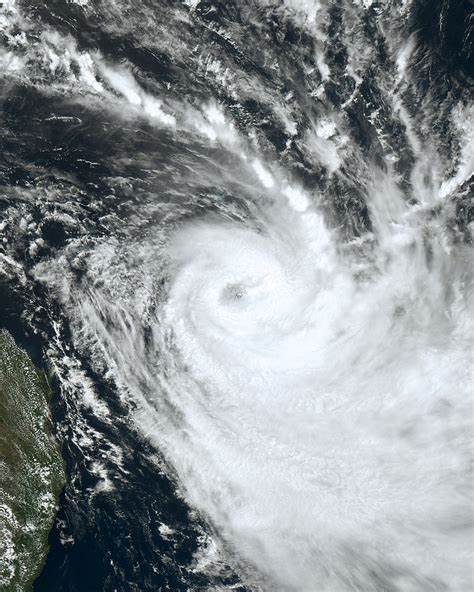Severe Tropical Cyclone Gabrielle Hits New Zealand and Norfolk Island
New Zealand stepped up recovery efforts after Cyclone Gabrielle. Cyclone Gabrielle has displaced 9,000 people and killed at least 5 people.
The 2022-23 cyclone season has brought yet another devastating tropical cyclone to the Pacific region. Severe Tropical Cyclone Gabrielle hit New Zealand and Norfolk Island, causing widespread damage and flooding.
Gabrielle was first identified as a developing tropical low on 6 February, south of the Solomon Islands. It quickly intensified, reaching Category 3 status as a severe tropical cyclone, before moving into the South Pacific basin. However, it rapidly degenerated into a subtropical low on 11 February.
Norfolk Island was placed under a red alert as Gabrielle approached, while heavy rain and wind warnings were issued across the North Island of New Zealand. States of emergency were extended in Auckland and the Coromandel, which were already in place as a result of the 2023 North Island floods. New states of emergency were also declared in other areas.
Gabrielle impacted New Zealand from 12 February to 16 February, causing widespread damage and flooding. A national state of emergency was declared in the country on 14 February, as the cyclone continued to cause havoc. The authorities warned residents to stay indoors and avoid any non-essential travel.
The cyclone caused significant damage to infrastructure, buildings, and homes. Flooding and landslides were also reported in several areas. The authorities are still assessing the extent of the damage caused by Gabrielle and are providing relief and support to affected communities.
9-Feb-2023: Operation Dost
Operation Dost
- As an India's response to earthquake-hit Turkey, sixth plane was sent carrying NDRF personnel, essentials, and medical equipments.
- Field hospital has been set up by Indian Army in Hatay province.
- Transport aircraft with medical supplies sent to Syria.
Earthquake
- with a magnitude 7.7 on Richter scale hit Turkey and Syria on 6 Feb 2023.
- Series of aftershocks led to huge devastation, major loss of lives and damages to infrastructure.
NDRF(National Disaster Response Force) was
- Sent to Japan during triple disaster(earthquake, tsunami and nuclear meltdown) in 2011.
- Sent to Nepal during earthquake in 2015.
Operation Dost symbolizes India's friendship with Turkey.
7-Feb-2023: Turkey is hit by a devastating earthquake
Earthquake in Turkey:
- Magnitude 7.8 earthquake struck along the Anatolia tectonic block.
- The earthquake emerged from relatively shallow depths and was a “strike-slip quake”.
- The strongest earthquake that Turkey has experienced in over a century and the worst disaster since 1939.
- The 1939 Erzincan Earthquake caused extreme damage in the Erzincan Plain and the Kelkit River Valley.
Causes of Earthquakes in Turkey:
- Complex tectonic interactions between African, Arabian, and Eurasian tectonic plates and the Anatolian tectonic block in the Eastern Mediterranean region
- Turkey sits on the Anatolian tectonic plate, which borders two major faults:
- North Anatolian Fault (NAF) line, a right-lateral strike-slip structure that accommodates much of the translational motion of the Anatolia block westwards with respect to Eurasia and Africa. It cuts across the country from west to east and is known to be particularly devastating.
- East Anatolian Fault (EAF), a tectonic boundary between the Anatolian Plate and the northward-moving Arabian Plate. It runs 650 kilometers from eastern Turkey and into the Mediterranean.
- The Aegean Sea Plate, located in the eastern Mediterranean Sea under southern Greece and western Turkey, is also a source of seismic activity in the region.
- Almost 95% of Turkey's land mass is prone to earthquakes, while about a third of the country is at high risk, including the areas around the major cities of Istanbul and Izmir and the region of East Anatolia.
Different types of earthquakes
Regular earthquake
- Vertical movement of plates
- Occurs along divergent or convergent plate boundaries
Strike-slip earthquake
- Horizontal movement of plates
- Occurs along transform boundaries
- Causes of strike-slip fault earthquakes
- Movement of plates against one another
- Release of built-up strain
Shallow Earthquakes
Earthquake that occurs at a shallow depth, usually within the Earth's crust, near the surface.
Characteristics
- Depth of less than 70 km
- Strong ground shaking and surface faulting
- More damaging than deep earthquakes
Factors affecting damage caused
- Magnitude of the earthquake
- Distance from the epicenter
- Depth of the earthquake
- Type of soil and geological conditions at the surface
Secondary hazards
- Landslides
- Rockfalls
- Other hazards

